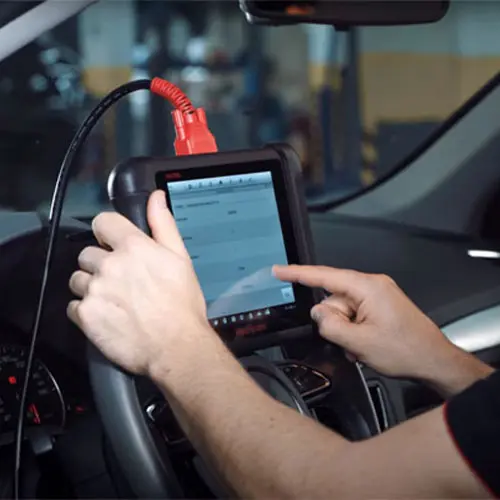
Car Key Transponder Repair
متابعةنظرة عامة
-
القطاعات الاعلام-الكتابة
-
تم نشر الوظائف 0
-
المشاهدة 27
وصف الشركة
What’s The Job Market For Car Ignition Replacement Professionals?
Car Ignition Replacement: A Comprehensive Guide
Car ignition systems play an important function in the overall performance and dependability of lorries. They are responsible for initiating the combustion process in the engine, guaranteeing the vehicle operates smoothly. Nevertheless, like all mechanical elements, ignition systems can break gradually, leading to performance problems. This post will offer a thorough take a look at car ignition replacement, including signs of failure, replacement steps, and maintenance ideas to help vehicle owners keep their ignition systems in optimum condition.
Understanding the Ignition System
Before delving into the replacement process, it is vital to comprehend the elements of the ignition system. It mainly includes:

| Component | Function |
|---|---|
| Ignition Coil | Converts battery voltage into high voltage to develop a trigger. |
| Stimulate Plug | Fires up the air-fuel mix in the engine cylinder. |
| Ignition Switch | Activates the ignition system and allows electrical present flow. |
| Distributor | Distributes high voltage from the ignition coil to the correct trigger plug. |
| Ignition Control Module (ICM) | Controls the timing and firing of the stimulate plugs. |
These parts collaborate to fire up the fuel-air mixture in the combustion chamber, making it possible for engine operation. Over time, wear and tear can result in ignition system failure, triggering the need for replacement.
Indications of Ignition System Failure
Specific signs suggest that the ignition system might need repair or replacement. Vehicle owners should listen to the following indications:
-
Difficulty Starting the Engine: If the vehicle struggles to begin or takes several efforts, it may signify ignition problems.
-
Misfires: Engine misfiring, identified by a rough idle or abrupt loss of power, can show defective trigger plugs or ignition coils.
-
Electrical Issues: Flickering lights or unpredictable control panel gauges may suggest ignition switch problems.
-
Stalling: Frequent stalling, particularly at low speeds, might originate from ignition control module failures.
-
Diminished Fuel Efficiency: Poor combustion due to ignition failure can cause increased fuel usage.
If vehicle owners experience any of these issues, it is a good idea to have the ignition system inspected by a certified mechanic.
Actions for Car Ignition Replacement
Changing the ignition system can be an intricate process. The following steps outline how to carry out a normal ignition replacement. Note that the specific actions may differ based upon the vehicle make and model.
1. Collect Necessary Tools and Parts
Before beginning the replacement, ensure that you have the necessary tools and components:
- Screwdrivers (flathead and Phillips)
- Wrenches and cogs
- New ignition parts (coil, spark plugs, distributor, and so on)
- Pliers
- Safety goggles and gloves
2. Disconnect the Battery
Safety first! Disconnect the unfavorable terminal of the battery to avoid electrical shock throughout the replacement process.
3. Remove the Old Ignition Components
Thoroughly eliminate the components of the ignition system:
- If replacing trigger plugs, utilize a spark plug socket and ratchet for removal.
- For the ignition coil, disconnect any wires before unbolting it.
- If appropriate, carefully eliminate the distributor and any associated components.
4. Install New Components
Set up the new parts in reverse order of removal:
- Begin by placing the new ignition coil in position, making sure all connections are secure.
- Set up new spark plugs, being mindful not to overtighten them.
- If applicable, set up the new distributor, aligning it correctly as you reconnect the circuitry.
5. Reconnect the Battery
When all elements are changed, reconnect the battery. Make sure the connections are safe and secure, and there are no loose wires.
6. Test the Ignition System
After setup, begin the vehicle to evaluate the new ignition system. Listen for smooth operation and look for any caution lights on the control panel. If concerns persist, re-evaluate your installation.
Maintenance Tips for the Ignition System
To extend the life of the ignition system and avoid future concerns, consider the following upkeep suggestions:
- Regular Inspections: Schedule routine evaluations of the ignition system during car upkeep checks.
- Change Spark Plugs: Follow the maker’s standards for trigger plug replacement periods.
- Check Wiring: Inspect wiring for indications of corrosion, fraying, or disconnections.
- Keep the Engine Clean: Regularly cleaning up the engine bay can avoid dust and particles from collecting around ignition components.
- Usage Quality Parts: Always use high-quality ignition elements from respectable manufacturers to ensure dependability.
Frequently Asked Questions About Car Ignition Replacement
Q1: How often need to I change my ignition system?A1: While there is no specific timeline, routine evaluations must be conducted every 30,000 miles or as recommended by the vehicle maker. Elements like trigger plugs normally require replacement every 30,000 to 100,000 miles, depending on the type. Q2: Can I change ignition elements myself?A2: Yes, if you have basic
mechanical skills. However, for those unfamiliar
with ignition systems, it’s suggested to seek expert support to avoid prospective mistakes. Q3: What are the costs involved in ignition replacement?A3: The cost can differ based on the vehicle and components required
. Parts might range from ₤ 20 to ₤ 300, while labor expenses in a mechanic’s shop can add another ₤ 100 to ₤ 200. Q4: How can I inform if the ignition coil is faulty?A4: Signs of a defective ignition coil include engine misfires, problem starting the vehicle, and bad acceleration.
A diagnostic test can also identify issues with the ignition coil. Q5
: Do I need to reset the vehicle’s computer system after replacement?A5: Typically, modern vehicles automatically find new components, but in some cases, a reset might be recommended. Consult your vehicle’s service
manual for particular directions. The ignition system is an important part
of vehicle operation, and comprehending its elements and maintenance can help vehicle owners prevent unneeded concerns and expenses. By recognizing the signs of failure and following the proper replacement steps
, car owners can guarantee their cars start reliably and perform at their best. Regular upkeep and care can lengthen the life of ignition elements, supplying peace of mind for chauffeurs on the roadway.
